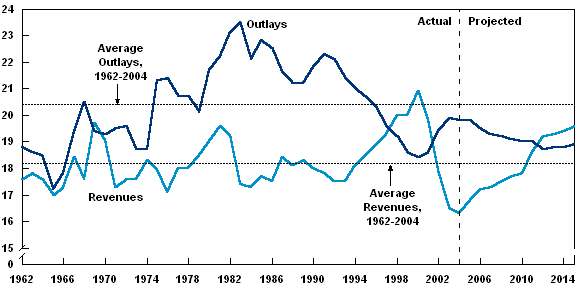A brief story came across the AP newswire this afternoon detailing the differences in the ongoing U.S. budget discussions/debates currently happening in Washington. Essentially, there are three schools of thought as to who owns the purse strings – the President, the House, or the Senate. All three are in fairly close agreement with how to spend nearly $2.6 trillion this year alone, but, for the third year in a row, all three neglect addressing the incredible deficits that are being created in the process.
The Congressional Budget Office (CBO) projects that if current laws and policies remained the same, the federal government would run budget deficits of $368 billion in 2005 and $295 billion in 2006. However, because of the statutory rules that govern such baseline projections, those estimates omit a significant amount of spending that will occur this year–and conceivably for some time in the future–for U.S. military operations in Iraq and Afghanistan and for other efforts in the war on terrorism. And, those estimates are on top of the record $412 billion deficit set for 2004.
The following chart from the CBO shows the total revenues and outlays as a percentage of GDP from 1962 to 2015. Notice the pattern within the past three years, and how the budget gap doesn’t appear to be narrowing. When will the elected powers-that-be attend a simple finance course?
